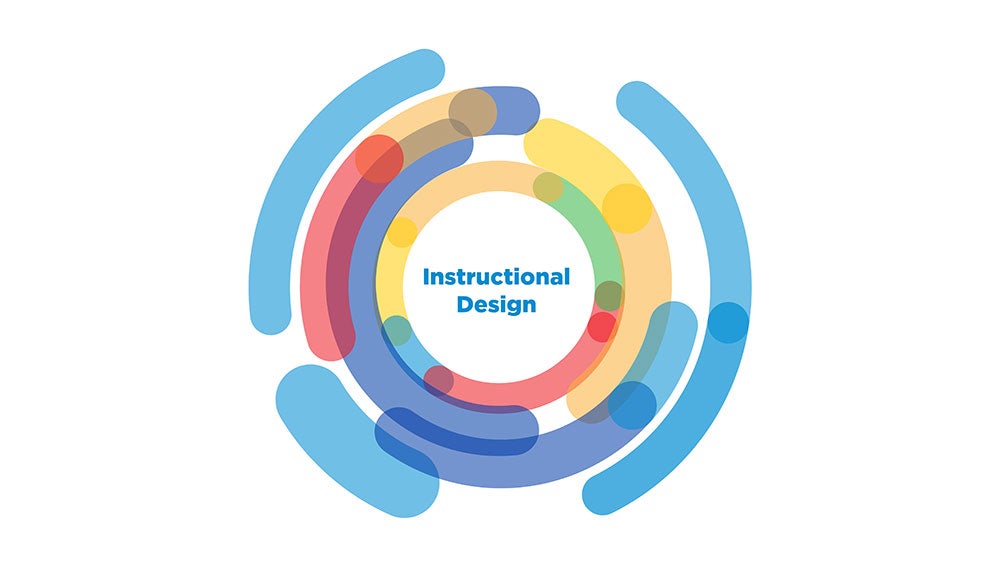Finding the Right Education and Training Program: Why Instructional Design Matters

Have you ever wondered what makes an educational or training course effective? Or how to be sure that a course will be a valuable use of time? To be honest, I had not, until recently when I learned about instructional design. Now that I know what instructional design is, I will never look at another educational or training opportunity in the same way again. Given labor shortages and the need to constantly train new staff in a profession where education and training are critical, I hope you won’t either.
In this blog, I will cover what instructional design is, why it is important, and how you can tell if a course you are considering has been developed using instructional design.
After all, let’s face it, who has the time today to take courses that may not meet their needs?
What is instructional design?
Instructional design is a cyclical process and proven approach to designing and developing education and training. When used, it provides confidence that the learning objectives for the course are achieved by the student. In other words, it delivers better results. Instructional design is often referenced when creating adult learning courses, but good teachers of children also use instructional design in their classrooms every day.
There are five common steps of the instructional design process. Together they make up the ADDIE model, which is a well-established method of creating valuable learning materials.
Assessment: The first step in instructional design is the assessment process. This is when the instructional designer seeks to clarify the goals of the training and identify the key information they need to create a successful course. Common questions in the assessment step include:
- Who are the students or the target audience?
- What do the students need to know and why is the information important for them to learn?
- What are the obstacles and constraints that need to be considered before designing a course?
As with most projects, it is important to ask these fundamental questions first in order to reach successful outcomes. For example, if students do not have regular access to a computer, but do have access to a smartphone, it is important to create an online course that can be taken on a smartphone.
Design: The second step in the process is design.As the saying goes, “a goal without a plan is just a wish.” In the design step, the instructional designer will use the information collected in the assessment phase to plan and customize the design of the course to meet students’ needs. In this phase, the designer works on identifying the learning objectives (or the things they want the students to be able to do, know or feel when they complete the course). The designer sketches out the course and identifies the best way to teach the students the material; all the while considering how to keep the students attention and make the learning engaging and fun.
Development: In the third step of the process, the developer follows the design plans developed and creates the course materials. Course materials can take a variety of forms, and include things like online modules, workbook or handbooks, reference guides, handouts, etc.
Implementation: Before the developed course is ready to go “live” it is piloted to make sure that all the goals that were set forth at the beginning of the process are met. Once the pilot is complete and updates are made, the course can be provided to the broader student body.
Evaluation: The last step in the process is evaluation, a vital step to measure the effectiveness of the course. The statement “You can’t manage what you don’t measure” is as true in education as it is in business. In the final evaluation (also called a summative assessment or test), the student will be asked to demonstrate that they learned what they were supposed to learn. As information or data is gathered, it is fed back into the assessment step so upgrades can be made, and the instructional design cycle continues.
Why is instructional design important?
Here are five top reasons why instructional design helps to ensure learning goals are met:
- Increased relevancy for the student – As part of the first step in the instructional design process (assessment), learning about who the students are allows an instructional designer to create a course that is customized and highly relevant. The fact that much learning has moved from in-person to online eLearning today is a result of our changing world and the needs of the students to have flexible and convenient training.
- Facilitates learning and retention – With so many life experiences, adults learn differently than kids, and instructional designers take this into account when designing courses. In fact, the entire process is built around ensuring that learning happens and the techniques used help recall information more readily. For example, the use of images, charts, videos and infographics over text are proven techniques that help to engage the student and obtain better outcomes.
- Efficient and cost effective – By focusing on student needs, avoiding obstacles, and using proven processes and techniques, instructional design ensures that students learn the knowledge and skills they need in an efficient and effective way.
- More engaging and fun – Instructional design seeks to keep things interesting for the students so they are engaged in the learning. Some instructional design best practices, like the use of practice activities and games, allow for students to apply what they learned during the course. This approach helps to ensure that students are ready for the final evaluation of learning at the end of the course.
- Based on evidence – Instructional design processes and best practices are constantly being evaluated to ensure that they are supported by data. Final evaluations provide validation or a record that the students have learned the material. This data is used to feed ongoing updates to ensure that the course continues to provide relevancy for the students.
How do you know if a course has been developed using instructional design?
Here are three different questions you can ask to find out if a course you are considering has been developed using instructional design.
- Is it 3rd party accredited? The easiest way to have confidence that course you are considering has been developed using instructional design is to find out if it has been accredited by a 3rd party that requires it. For example, the ASTM E2659 Standard Practice for Certificate Programs requires that certificate programs are created and guided by instructional design. ANSI National Accreditation Board (ANAB) then accredits certificate programs against this internally recognized standard in their Certificate Accreditation Program (CAP). Learn more about ANAB and certificate accreditation here.
- What was the instructional design model used? Another option is to ask the instructor or program administer which instructional design methods were used to develop the course. If they don’t quickly come back with an answer, you will have yours. Any model references should include the basic steps of instructional design as described above. Find a list of instructional design models here.
- Do the course materials appear to include the important components of instructional design? This is probably the most difficult question to ask out of the three, but a well-informed (as you are now) student should be able to tell if a course has been designed following an instructional design model. Robert Gagne’s nine steps for building instruction (another proven approach that is utilized in instructional design) can help you identify a course that has been instructionally designed. At the very least, all courses should inform the students of the learning objectives, and include why the information is important to them. Learning objectives should be objective and straight forward. If you are confused on what you will learn or what you will be capable of by the end of a course before you start it, your alarm bells should be ringing. Read more about Gagne’s nine instructional events here.
Now that you know what instructional design is and why it is important, I hope you, like me, will never look at another education and training course in the same way again. Understanding instructional design and asking the right questions to find out if a course you are considering was developed using instructional design can give you confidence that your investment in training is worth the investment of time and money.
Learn more about instructional design:
- Association for Talent Development (ATD): www.td.org
- International Society for Performance Improvement (ISPI): ispi.org
- InstructionalDesign.org: instructionaldesign.org






